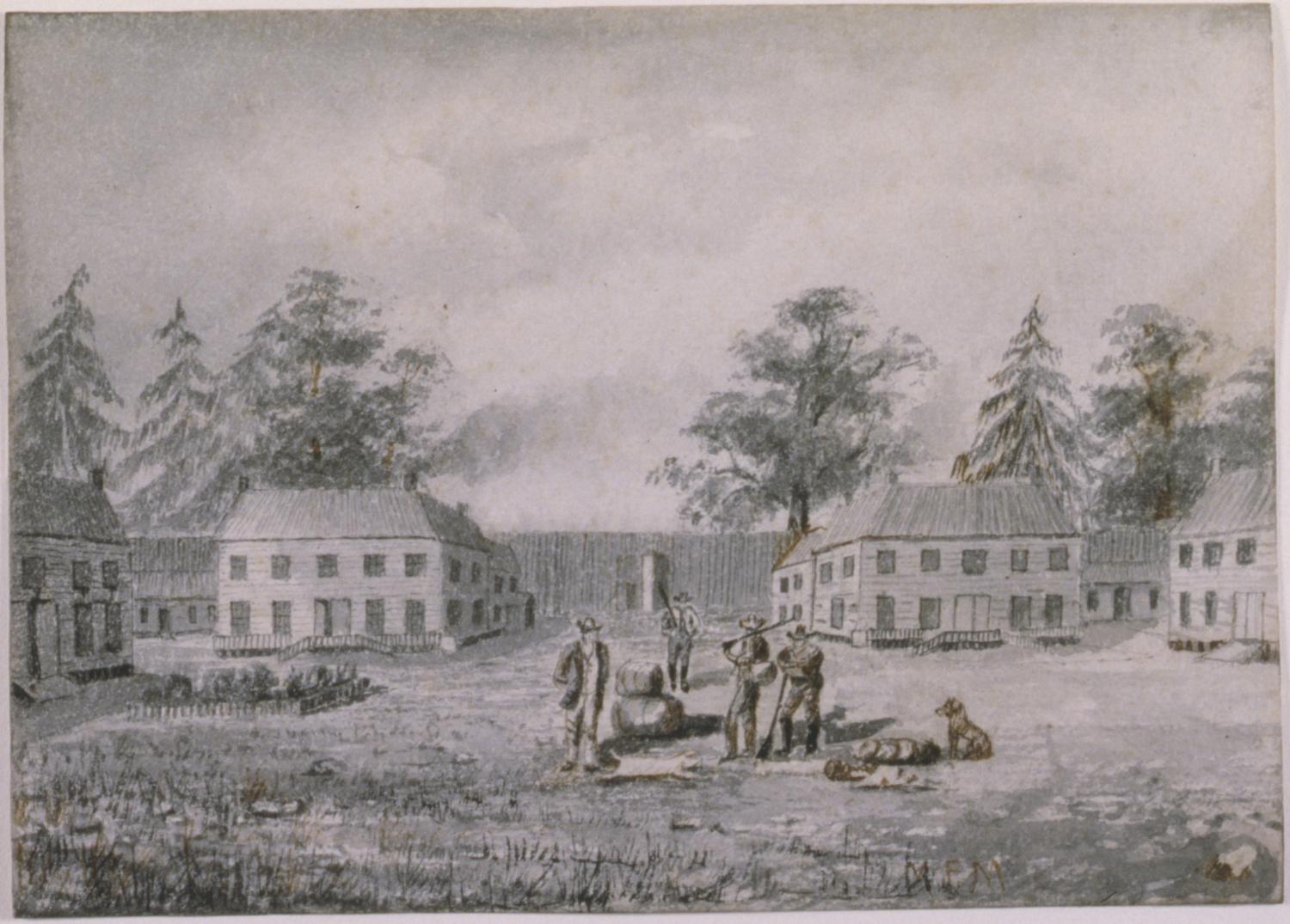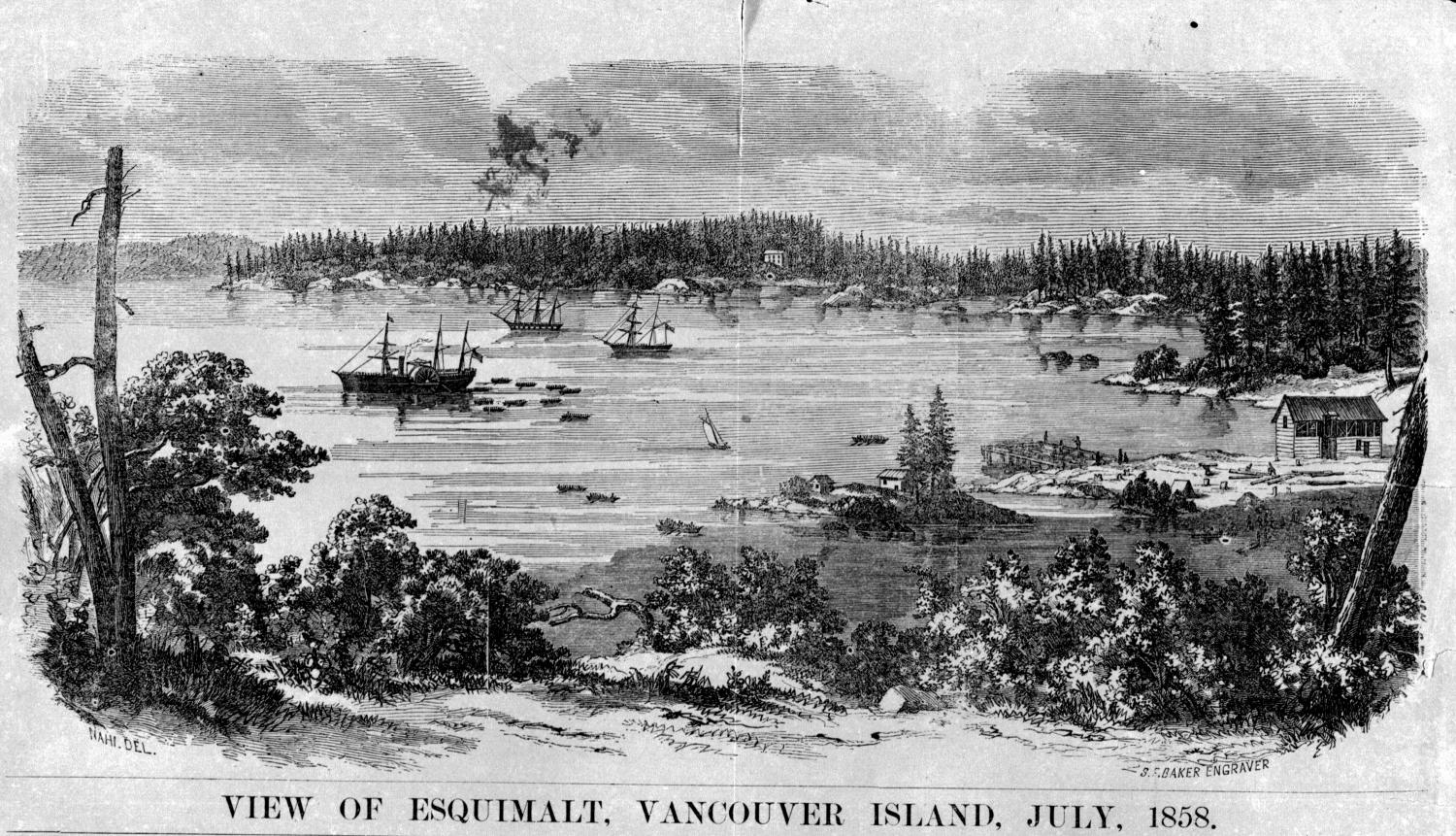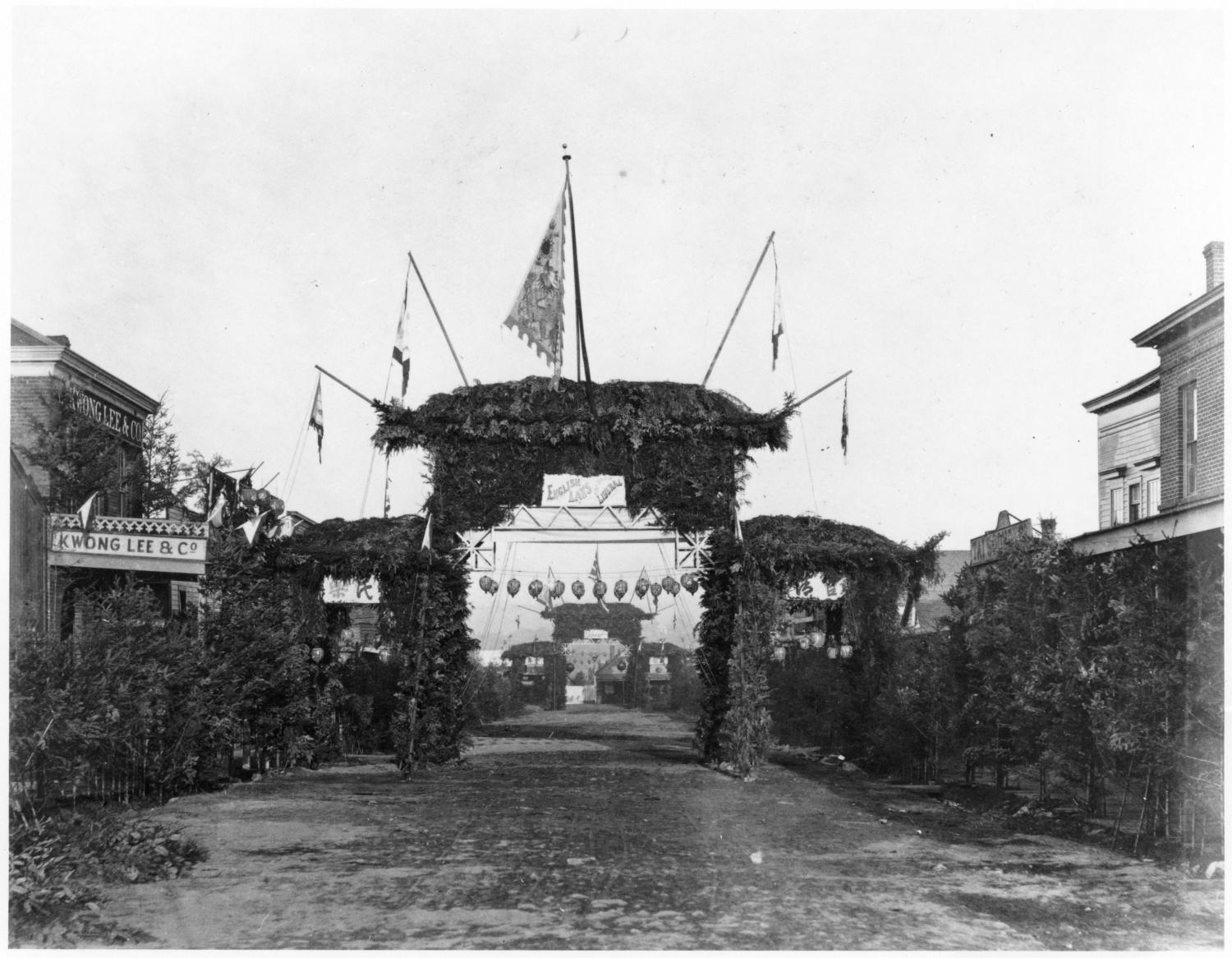Victoria Booms
A fur-trading outpost swiftly becomes a bustling hub for global adventurers
Date: 1859
In April 1858, word quickly spread of gold discovered on the Fraser River, and Fort Victoria transformed seemingly overnight. It went from a quiet outpost of 500 settlers to an important stop for those making the trek inland. Within a few weeks of the first ship's arrival, 20,000 gold seekers had landed, most from San Francisco. A tent city blossomed outwards to accommodate the transient newcomers.
But not everyone was just passing through. By summer's end, the settlement's population had increased tenfold to 5,000. The small fort had become a veritable city. And thanks to the influx of San Franciscan capital, business was booming. City lots once available at $25 apiece were now sold for $3,000. First Nations from all along British Columbia's north coast — including the Tsimshian, Haida, Tlingit, Heiltsuk, and Kwakwaka'wakw — also came to Victoria to trade with the miners and merchants.
By winter, Californian gold seekers had set up more permanent residence in Victoria. With them, they brought new views on race, politics, and law, along with a freewheeling culture distinct from the staid Victorian-era lifestyle that Victoria residents had previously sought to emulate. But it wasn't just Californians. Manifold business signs testified to the city's newfound cosmopolitan status. "Won Shing, Washing and Ironing," read one. "Scotch House," another. One could drink at the "San Francisco" saloons or dine out at "Oriental" and "New England" restaurants.
"A walk through the streets of Victoria showed the little capital to be a small polyglot copy of the world," wrote George Monro Grant, a Canadian church minister, writer, and political activist. "Its population is less than 5,000, but almost every nationality is represented. Greek fishermen, Jewish and Scottish merchants, Chinese washermen, French, German and Yankee officeholders and butchers, negro waiters and sweeps, Australian farmers and other varieties of the race rub against each other, apparently in the most friendly way."
Victoria was no longer another stop on the long road to the Interior goldfields. It had become a destination in its own right.
Sources:
1. History. City of Victoria, www.victoria.ca/EN/main/residents/about/history.html.
2. Woodcock, George. British Columbia: a History of the Province. Douglas & McIntyre, 1994.





